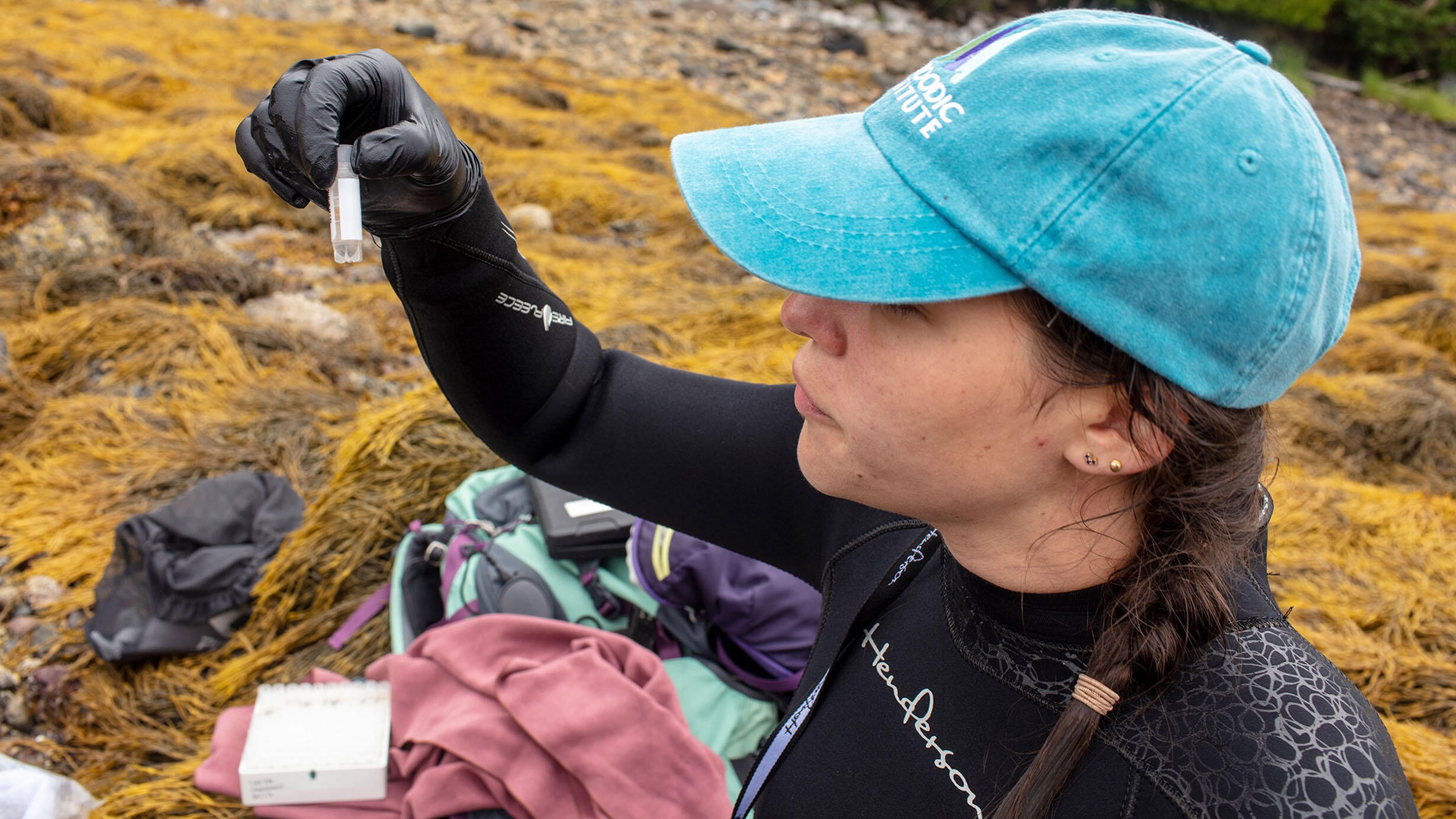 © Eliot Dudik
© Eliot Dudik New research led by a Museum scientist confirms that two species of sea stars, commonly known as star fish, that live in the coastal waters of Europe and North America are crossbreeding in the wild.
“Sea stars are what we call a keystone species, that is, they are key to the survival of other species around them,” said Melina Giakoumis, associate director of the Museum’s Institute for Comparative Genomics and the corresponding author on the recently published study in the journal Molecular Ecology. “Sea stars eat other dominant competitors, like mussels, which keeps those populations in check and allows other species to thrive. They are crucial to the health and stability of their community.”
Scientists have long suspected that two species of sea stars—Asterias rubens, the common starfish, and Asterias forbesi, known as Forbes’ sea star—crossbreed, or hybridize, in the North Atlantic Ocean.
Giakoumis, who completed her Ph.D in biology at the CUNY Graduate Center earlier this year, set out with colleagues to investigate through genomic data. After taking and analyzing DNA samples from both species at 33 sites in the North Atlantic, the researchers found that hybrid starfish are widespread in waters from Cape Cod to Nova Scotia.
The two species were found to have different environmental preferences: A. forbesi has a limited geographic range and A. rubens has a wider range that extends all the way to western Europe.
Crossbreeding occurs where these ranges overlapped, with the Gulf of Maine in the center.
The study also suggests that A. forbesi has a higher tolerance for warmer temperatures, while A. rubens prefers colder habitats. Hybrids are found in areas with temperatures that are tolerable by both species.
“This work is particularly important because the climate of the North Atlantic is changing rapidly,” Giakoumis said. “The Gulf of Maine, which is the heart of the hybrid zone, is warming faster than 99 percent of the global ocean. Understanding how these keystone species’ distributions may change, along with their genomic adaptations related to the environment, will be interesting to know in this highly susceptible region.”